Hello 40k fans! Chris Morgan, Chief Librarian of the Forge the Narrative Podcast, is back from hiatus to drop some knowledge bombs again with the next Tomes of the Librarius article. Also, be sure to check the Tactics Corner for more great articles!
Just as a reminder, in this series we will explore facets of the history and legends of the Grimdark. This is meant to be an easy summary and introduction geared towards new players or people unfamiliar with the setting, but should still be an interesting read or fun refresher for those already familiar. There’s so much detail in 40k lore that a bare summary seems so inadequate, but for new people this should be the right portion to get a feel for the history of the universe we enjoy our games in.
This week we will be visiting a planet close to my heart: Baal (and its twin moons). Baal has a storied history that has a place of honor among the planets of the galaxy. From a paradise system, to radiated wasteland, to primarch’s home, and now the capital of Imperium Nihilus, this system has played an important role in the fate of the Imperium for thousands of years.
Ancient History
In the golden age of humanity’s journey across the stars, settlers came across a desert planet with two habitable moons. Located in an area of space known as the Red Scar – home to a peculiar kind of radiation and an abundance of red stars – the planetary cluster was like an oasis in a desert. The human colonies on the moons prospered and were considered paradises of life and beauty, as well as brimming with advanced human technologies. As with all good things, that status came to an abrupt end as the galaxy went mad with the birth of Slaanesh.
Records that survived the destruction that followed are scarce, but what is known is that at some point the two moons turned on each other. Baal Prime’s orbiting shipyards and factories – marvels of human technology – were sought by Baal Secundus, and a war broke out between the moons over control of the platforms. Terrible chemical and biological weapons were unleashed upon both worlds, and the wondrous paradises became pock-marked, radiated wastelands. Lakes were dried or turned to toxic waste, mountains were leveled and fertile plans made barren. The shipyards above Baal Prime were destroyed and crashed upon the surface, sending the world into a nuclear winter. What wildlife that survived turned into monsters, fire-spewing scorpids and giant predatory arachnids at the least. Some of the old weapons, like the sentient Thirstwater, tempted men with sustenance only to drain them into dust. The survivors were reduced to nomadic caravans of scavengers dodging radiation and predators at best, or mutated to cannibalistic madmen at worst. It stayed that way for thousands of years, until the fateful day a pod descended from the sky.
The Coming of Sanguinius
Sanguinius landed on Baal Secundus, and the tribe of scavengers who found him nearly decided to kill him upon seeing vestigial wings surrounding his perfect infant form. Ultimately they decided to take him in and raise him as their own. This tribe – called ‘The Folk of Pure Blood” or “The Blood” – quickly found themselves the saved instead of the saviors. As all primarchs do, Sanguinius quickly outpaced their abilities and came to rule over them. They hunted down and destroyed the mutant hordes that hunted them, and were poised to enter a renaissance of advancement and progress unseen since the days before the tragedy. When the Emperor arrived, Sanguinius joined him without question, and his adopted tribe gave their name to his legion – The Blood Angels. Baal itself became the home of the Blood Angels fortress monastery, a mighty fortress for a mighty legion set to conquer the stars.
Notable Battles
The Horus Heresy
During the Horus Heresy, the Blood Angels were away from their home world. Even so, Horus knew that he could not leave the fortress alone, as survivors from Isstvan and Imperial Army loyalists were gathering there. Details now are scarce, but a large battle was fought at Baal during the Heresy. Ultimately, the attackers were repelled, though Sanguinius’ return to that world would be in victorious death.
The Devestation of Baal
The largest Tyranid invasion ever recorded descended upon the Baal system as Abaddon the Despoiler’s 13th Black Crusade ramped up in earnest. The Blood Angels and nearly all their successors gathered for its defense – the largest gathering of the Sons of Sanguinius since the legion was sundered 10,000 years before. A brutal war followed that saw several chapters destroyed. All would have been lost if not for the opening of the Cicatrix Maledictum. The warp rift swallowed the damaged Hive Fleet and struck a blow against the Hive Mind that saw it temporarily killed. Demons ravaged Baal Prime. They vanished quickly, but not before piling up Tyranid skulls in the name of Khorn’e mightiest bloodthirster, Kha’Bandha. In the Hive Fleet’s place, Guilliman’s crusade fleet appeared. As Dante nearly died on the surface defeating the Swarmlord in single combat, the Primaris marines descended upon the gutted and leaderless Tyranid remnants.
The Future of Baal
With Dante set up as the ruler of Imperium Nihilus, Baal is the only bastion of hope in half a galaxy lost to darkness. It will be interesting to see where the lore goes from here in shaping the future of what has now become the wild west of the Grimdark.
Cheers
Captain Morgan
And remember, Frontline Gaming sells gaming products at a discount, every day in their webcart!

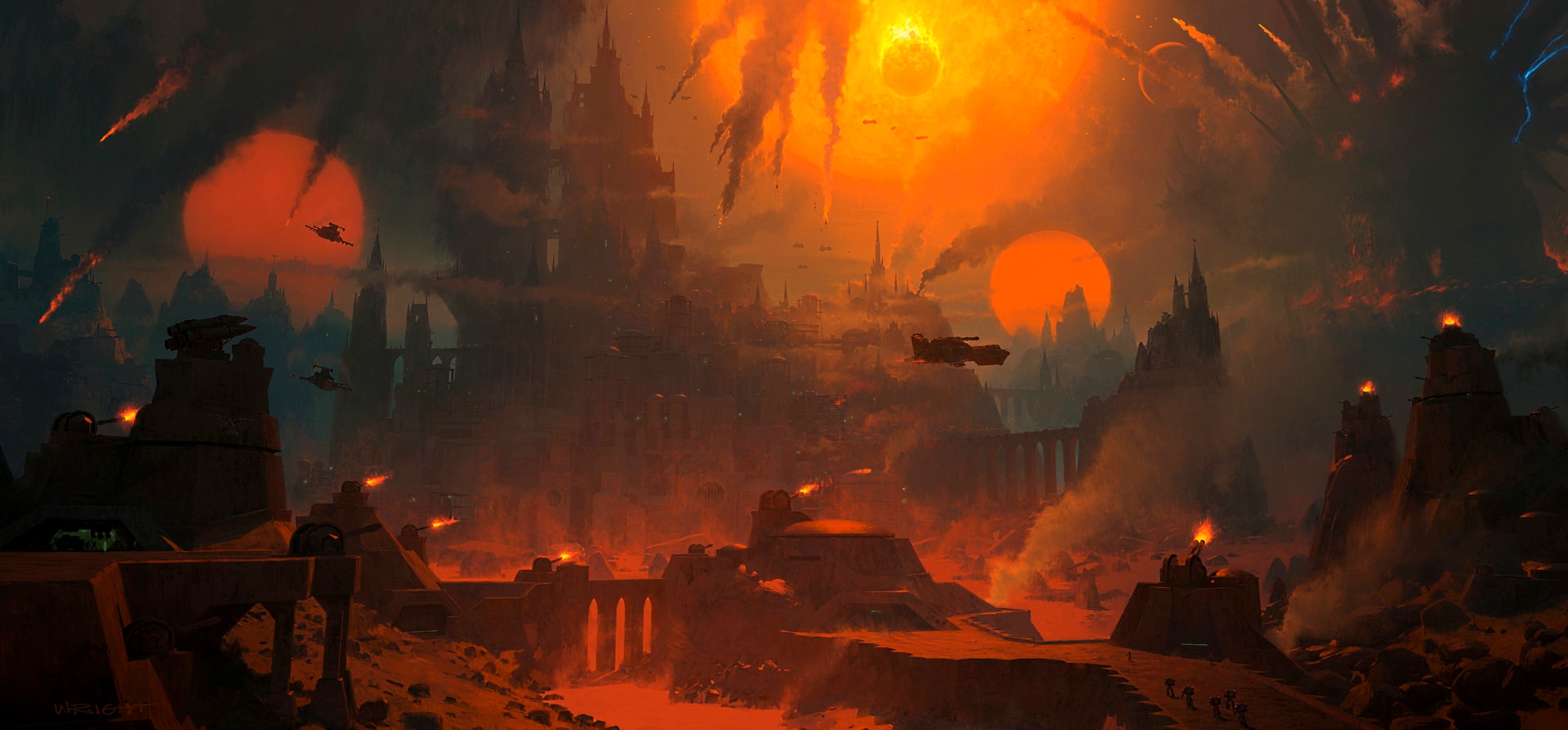
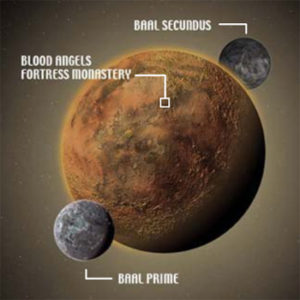

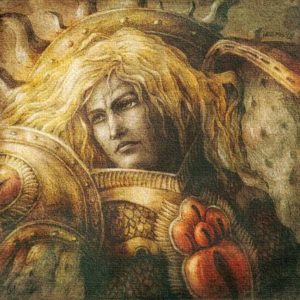
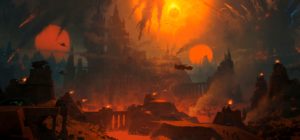
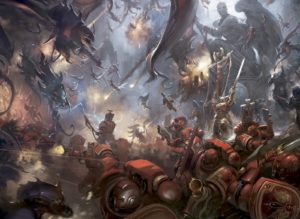
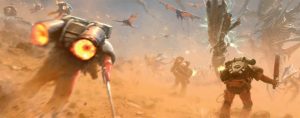
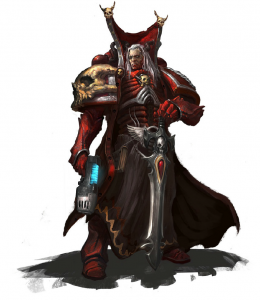


So did GW Recon the whole Necron and Blood Angels bro fist to cripple the Hive Fleet? It was the only bit of lore that saw the Silent Kings work in actions and the shocker that he might have met with Sanguinius himself was juicy lore.
Sad times if they swept that away to just say they were saved by Chaos.
seconded
That was the Shield of Baal campaign, which took place in the Cryptus system (hence it not being included in the article). It is very much still canon.